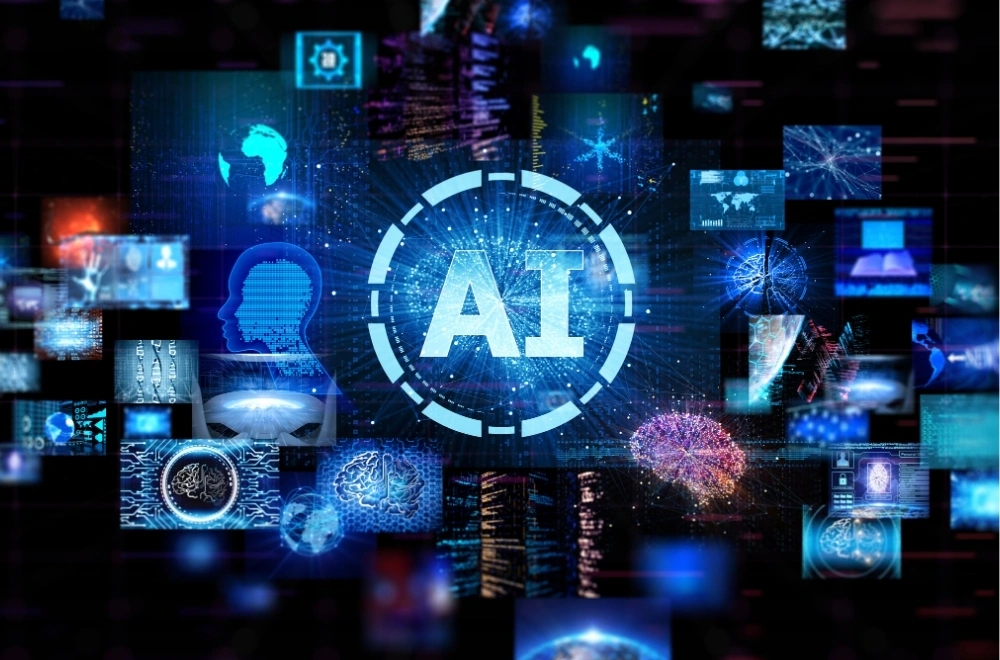Artificial Intelligence (AI) is one of the most transformative technologies of the 21st century, influencing industries, daily life, and the future of work. But what exactly is AI? How does it work, and why is it so important?
This beginner’s guide will break down AI in simple terms, covering its definition, types, applications, benefits, challenges, and future trends.
1. What Is Artificial Intelligence (AI)?
Artificial Intelligence refers to the simulation of human intelligence in machines programmed to think, learn, and perform tasks that typically require human cognition. These tasks include problem-solving, decision-making, language understanding, visual perception, and even creativity.
AI systems rely on algorithms—sets of rules or instructions—that enable them to process data, recognize patterns, and make decisions with minimal human intervention.
Key Characteristics of AI
- Learning: AI improves over time by analyzing data (Machine Learning).
- Reasoning: AI can make logical decisions based on available data.
- Problem-Solving: AI can find solutions to complex issues.
- Perception: AI can interpret visual, auditory, or sensory data (e.g., facial recognition).
- Adaptation: AI can adjust to new inputs and environments.
2. Types of Artificial Intelligence
AI can be categorized based on capabilities and functionality.
A. Based on Capabilities
1. Narrow AI (Weak AI)
- Designed for specific tasks (e.g., Siri, Alexa, chatbots).
- Cannot perform beyond its programmed function.
- Most AI today falls under this category.
2. General AI (Strong AI)
- Hypothetical AI with human-like intelligence.
- Can understand, learn, and apply knowledge across various fields.
- Does not yet exist but is a major research goal.
3. Super AI
- Surpasses human intelligence in all aspects.
- Exists only in theory and sci-fi (e.g., self-aware robots).
B. Based on Functionality
1. Reactive Machines
Basic Artificial Intelligence that reacts to inputs without memory (e.g., IBM’s Deep Blue chess computer).
2. Limited Memory AI
Uses past data to make decisions (e.g., self-driving cars).
3. Theory of Mind AI
Future AI that understands emotions and human thoughts (still in research).
4. Self-Aware AI
Machines with consciousness (currently hypothetical).
3. How Does AI Work?
AI systems rely on several core technologies:
A. Machine Learning (ML)
- AI learns from data without explicit programming.
- Uses algorithms like decision trees, neural networks, and regression models.
B. Deep Learning (DL)
- A subset of ML using artificial neural networks.
- Excels in image/speech recognition (e.g., Google’s DeepMind).
C. Natural Language Processing (NLP)
Helps Artificial Intelligence understand and generate human language (e.g., ChatGPT, translation apps).
D. Computer Vision
Enables AI to interpret visual data (e.g., facial recognition, medical imaging).
E. Robotics
Combines AI with mechanical systems (e.g., industrial robots, drones).
4. Applications of AI in Real Life
AI is everywhere—here are some common uses:
A. Healthcare
- Diagnosis: AI analyzes medical images (X-rays, MRIs).
- Drug Discovery: Speeds up research (e.g., AI predicting protein structures).
B. Finance
- Fraud Detection: AI spots unusual transactions.
- Algorithmic Trading: AI makes stock market predictions.
C. Retail & E-Commerce
- Recommendation Systems: Amazon, Netflix suggest products/movies.
- Chatbots: AI customer service assistants.
D. Transportation
- Self-Driving Cars: Tesla, Waymo use AI for navigation.
- Traffic Management: AI optimizes traffic lights in smart cities.
E. Entertainment
- AI-Generated Content: Deepfake videos, AI music (e.g., OpenAI’s Jukebox).
- Gaming: NPCs (Non-Player Characters) with adaptive behavior.
F. Education
- Personalized Learning: Artificial Intelligence tutors adapt to student needs.
- Automated Grading: AI checks assignments quickly.
5. Benefits of AI
- Efficiency: Automates repetitive tasks, saving time.
- Accuracy: Reduces human errors (e.g., in medical diagnosis).
- 24/7 Availability: AI chatbots and systems work non-stop.
- Data Analysis: Processes vast amounts of data quickly.
- Innovation: Powers breakthroughs in science, medicine, and tech.
6. Challenges & Risks of AI
Despite its advantages, AI presents concerns:
A. Job Displacement
Automation may replace certain jobs (e.g., manufacturing, customer service).
B. Bias & Fairness
AI can inherit biases from training data (e.g., discriminatory hiring algorithms).
C. Privacy Issues
AI systems collect massive data, raising surveillance concerns.
D. Security Risks
Artificial Intelligence can be exploited for cyberattacks or deepfake scams.
E. Ethical Concerns
Who is responsible if an artificial intelligence makes a harmful decision?
7. The Future of AI
AI is evolving rapidly, with trends like:
- Generative AI: Tools like ChatGPT, DALL-E create text, images, and videos.
- AI in Space Exploration: NASA uses AI for Mars rovers.
- Quantum AI: Combines AI with quantum computing for ultra-fast processing.
- AI Regulations: Governments are creating laws to ensure ethical AI use.
Conclusion
Artificial Intelligence is reshaping the world, offering incredible opportunities while posing significant challenges. As AI continues to advance, understanding its basics helps us navigate its impact responsibly.
Whether you’re a student, professional, or just curious, AI is a field worth exploring—because the future is intelligent!
